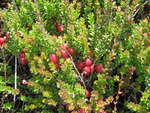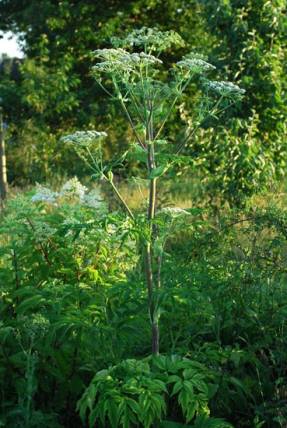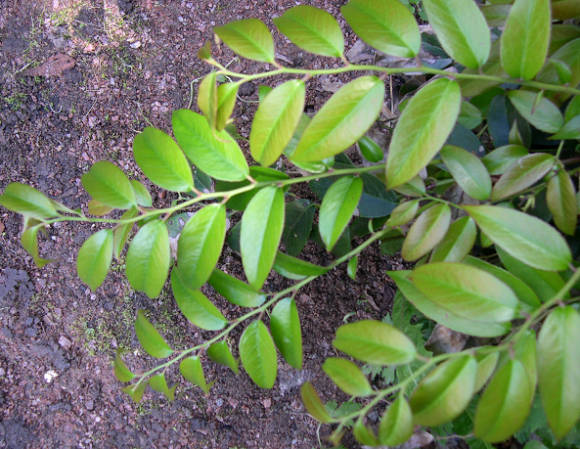Who are the five brothers?
Two beards, two beardless, And the last, fifth, looks ugly:
Only the beard on the right, not a trace on the left.
Who doesn't know this nursery rhyme? But I think few people realize that the original of this work was written in ancient times in Latin, and from it it was translated into Russian and other languages. There are poems with the same words in both English and German. And their clue is rather strange - this is a rose flower, which has five hard sepals under five delicate petals, two of which are pinnately dissected along the edge, two with a smooth smooth edge, and one with lateral feathers on only one side.
Rose is probably the most beloved flower in Europe since ancient times. It is associated with the most beautiful ancient Greek legend about a beautiful nymph who fell in love with a man, but was thrown by jealous Athena into a thorn bush, and then revived as a beautiful flower. The scarlet rose flaunts on the coat of arms of the English royal dynasty. It can be seen on the patterned lattices of London's palaces and parks, on the royal standard and on coins in denominations of one pound sterling, 20 pence. This is a favorite flower of gardeners. Such a variety of varieties, from every possible shape, color, size and smell of flowers, is probably not obtained from any other plant. Where did this variety come from? After all, a gardener cannot create a new variety out of nothing.
The basis for the varietal diversity of garden roses was and continues to be the exceptional genetic diversity of their wild relatives - rose hips. How many species of rose hips exist in the world, no taxonomist will tell you for sure. Susan Frutig Biles, well-known in American horticultural circles, in her book "Roses" estimates their number at about two dozen. But if you look at the Royal Botanic Gardens, Kew's Index Kewensis, an index of published wild flowering plant names, we find over 3,000 rosehip names! Therefore, despite the huge number of scientific works devoted to rose hips, and a huge number of species described by scientists, there is still a lot of unclear in their systematics. So the words of the founder of botanical taxonomy Carl Linnaeus "species rosarum difficillime distinguuntur, difficilius determinantur", i.e. "The types of roses are difficult to distinguish and can be determined by the stud" and have not lost their relevance now.
Nevertheless, the number of actually existing natural species, without a big doubt, can be estimated at several hundred. They are most diverse in the mountains of Western Asia and China, and the general range of the genus covers almost all of Eurasia, North Africa and North America. They are not found only in tropical forests. Rose hips grow along river floodplains, in the steppes along the slopes of ravines, along the sea coasts, along the mountains, along the slopes and ridges of which they penetrate south even into the tropical zone. In the north, the spiny rose is found beyond the Arctic Circle.
Many rose hips are very decorative and have been cultivated by humans for centuries. I must say that the wild relatives of garden roses are often no less charming for their pristine beauty. Their flowers can be white, scarlet, various shades of pink or crimson, and yellow in Central Asian species. Many have a pleasant, sometimes very strong, aroma. Foliage can also be decorative, openwork, gray-purple, like that of a gray rose, or orange by autumn. In addition, rose hips are important for humans as a source of genetic diversity for the creation of ever new varieties of garden roses, a most valuable source of medicinal substances and just a multitude of still unsolved mysteries.
Rosehips, when grown, are extremely unpretentious to soil conditions, and species of temperate latitudes are distinguished by high winter hardiness and resistance to fungal diseases.This predetermined the use of rose hips as rootstocks for their too tender and painful garden descendants. Dog rose hips are especially widely used in this capacity.
 The most common view in the middle zone of European Russia cinnamon, or may rosehip (Rosa cinnamomea, or Rosa majalis). Some of its bushes can be found in forest glades and clearings. But it really thrives in the floodplains of rivers, where it often forms huge thickets stretching for kilometers. In May-June, they are covered with rather large bright or pale pink flowers for a couple of weeks, and by the end of August they turn orange, and then turn red from ripe fruits. Cinnamon rosehip plants are quite variable. They can form high, up to 2.5 - 3 m in height, dense bushes, or are much lower, forming sparse thickets about a meter high, occupying an area of ten square meters, or even more. And this is one plant! The shape of the fruits is also variable - from strongly elongated, almost fusiform, elliptical, to rounded or even slightly flattened. The most characteristic distinguishing features of this type of rose hips are the bases of the trunks densely covered with small needle-like spines and thin, small, slightly curved, paired thorns on the flowering shoots. But its sepals do not at all correspond to the rhyme given in the epigraph - like some other species, they are all whole-edged, without side feathers.
The most common view in the middle zone of European Russia cinnamon, or may rosehip (Rosa cinnamomea, or Rosa majalis). Some of its bushes can be found in forest glades and clearings. But it really thrives in the floodplains of rivers, where it often forms huge thickets stretching for kilometers. In May-June, they are covered with rather large bright or pale pink flowers for a couple of weeks, and by the end of August they turn orange, and then turn red from ripe fruits. Cinnamon rosehip plants are quite variable. They can form high, up to 2.5 - 3 m in height, dense bushes, or are much lower, forming sparse thickets about a meter high, occupying an area of ten square meters, or even more. And this is one plant! The shape of the fruits is also variable - from strongly elongated, almost fusiform, elliptical, to rounded or even slightly flattened. The most characteristic distinguishing features of this type of rose hips are the bases of the trunks densely covered with small needle-like spines and thin, small, slightly curved, paired thorns on the flowering shoots. But its sepals do not at all correspond to the rhyme given in the epigraph - like some other species, they are all whole-edged, without side feathers.
 Another rose hip, all of whose "five brothers" are exactly the same - wrinkled rosehip (Rosa rugosa). Its natural range is located on the Pacific coast of the Russian Far East, Korea and Japan. However, in the XVIII century. It was introduced to Europe, where it not only became widespread in culture and gave rise to numerous garden forms, mostly hybrid with other species, forms, but also naturalized in many places. On the dunes of the Baltic Sea coast, wrinkled rose hips often form dense thickets, and here the creeping form prevails, covering the sand with a bright thorny carpet. Introduced by British colonists to North America, it also took root on the American Atlantic coast. In addition to the large bright flowers that appear in the wrinkled dog rose almost all summer, it is very attractive in autumn with its bright yellow-orange color of the leaves and large, orange-red, slightly flattened fruits.
Another rose hip, all of whose "five brothers" are exactly the same - wrinkled rosehip (Rosa rugosa). Its natural range is located on the Pacific coast of the Russian Far East, Korea and Japan. However, in the XVIII century. It was introduced to Europe, where it not only became widespread in culture and gave rise to numerous garden forms, mostly hybrid with other species, forms, but also naturalized in many places. On the dunes of the Baltic Sea coast, wrinkled rose hips often form dense thickets, and here the creeping form prevails, covering the sand with a bright thorny carpet. Introduced by British colonists to North America, it also took root on the American Atlantic coast. In addition to the large bright flowers that appear in the wrinkled dog rose almost all summer, it is very attractive in autumn with its bright yellow-orange color of the leaves and large, orange-red, slightly flattened fruits.
 The proverb says that there is no rose without thorns. This is not true, there is! For example, alpine rosehip, or drooping (Rosa alpine, or R. pendulina), growing in the mountains of central Europe, and to the east reaching the Carpathians. This is a short, usually no more than a meter in height shrub, really completely devoid of any thorns. Its flowers are large and bright, on long pedicels, which droop almost immediately after the petals fall. Therefore, the long, spindle-shaped dark red fruits hang on it in the fall like catkins. Pedicels and fruits are notable for another feature: they are densely covered with long glandular bristles with a sticky droplet at the end, which gives them a completely unique look.
The proverb says that there is no rose without thorns. This is not true, there is! For example, alpine rosehip, or drooping (Rosa alpine, or R. pendulina), growing in the mountains of central Europe, and to the east reaching the Carpathians. This is a short, usually no more than a meter in height shrub, really completely devoid of any thorns. Its flowers are large and bright, on long pedicels, which droop almost immediately after the petals fall. Therefore, the long, spindle-shaped dark red fruits hang on it in the fall like catkins. Pedicels and fruits are notable for another feature: they are densely covered with long glandular bristles with a sticky droplet at the end, which gives them a completely unique look.
 In southern Europe, Crimea, southern Ukraine and European Russia, it grows rose hips(Rosa gallica) - the ancestor of many, especially old, garden roses, including the pharmacy rose, famous in medieval Europe. Typically, these are undersized, less than a meter in height, low-branched bushes, growing due to underground horizontal rhizomes and often forming continuous thickets. The stems and all branches, including the pedicels themselves, are densely planted with straight sharp spines and smaller spines and needles. The flowers are formed at the ends of the shoots, they are large and bright red. This is the one to whom the verse about the five brothers applies one hundred percent! The sepals of the French rose hips are large, with large and sloppy lateral feathers.In the eastern part of its range, this species, perhaps partly due to hybridization with other species of rose hips, is very variable both in the number and density of the arrangement of thorns (up to plants practically devoid of thorns) and in the color of the corollas. Many of these atypical forms are described as separate species from the French rose, and it is quite possible that they are.
In southern Europe, Crimea, southern Ukraine and European Russia, it grows rose hips(Rosa gallica) - the ancestor of many, especially old, garden roses, including the pharmacy rose, famous in medieval Europe. Typically, these are undersized, less than a meter in height, low-branched bushes, growing due to underground horizontal rhizomes and often forming continuous thickets. The stems and all branches, including the pedicels themselves, are densely planted with straight sharp spines and smaller spines and needles. The flowers are formed at the ends of the shoots, they are large and bright red. This is the one to whom the verse about the five brothers applies one hundred percent! The sepals of the French rose hips are large, with large and sloppy lateral feathers.In the eastern part of its range, this species, perhaps partly due to hybridization with other species of rose hips, is very variable both in the number and density of the arrangement of thorns (up to plants practically devoid of thorns) and in the color of the corollas. Many of these atypical forms are described as separate species from the French rose, and it is quite possible that they are.
 Another undersized rosehip densely covered with thorns is called prickly rosehip (Rosa spinosissima). Perhaps, here I am not quite right in translating its Latin name into Russian, since in it the word “prickly” stands in the awkward-sounding in Russian superlative degree of comparison! And this is not an exaggeration! Cultivated garden forms it is often bred in squares and palisades: they are taller, bloom profusely with snow-white medium-sized flowers, and by autumn they form hard, dry, blackening fruits when ripe. In our country, it is rarely found in the wild in the steppe zone, but in the Far East in the mountains its close, outwardly almost indistinguishable relative is common.
Another undersized rosehip densely covered with thorns is called prickly rosehip (Rosa spinosissima). Perhaps, here I am not quite right in translating its Latin name into Russian, since in it the word “prickly” stands in the awkward-sounding in Russian superlative degree of comparison! And this is not an exaggeration! Cultivated garden forms it is often bred in squares and palisades: they are taller, bloom profusely with snow-white medium-sized flowers, and by autumn they form hard, dry, blackening fruits when ripe. In our country, it is rarely found in the wild in the steppe zone, but in the Far East in the mountains its close, outwardly almost indistinguishable relative is common.
 Dog rose (Rosa canina) has already been mentioned above in connection with the medicinal properties of its fruits. It can often be seen along the steppe gullies in the black earth strip of Russia, along the railways, in various disturbed places where it gets when escaping from culture. It is cultivated very widely, and not even for the medicinal properties of its fruits. Dog rose is the most common rootstock for garden roses. Gardeners love it for its unpretentiousness, winter hardiness and significant resistance to diseases affecting rose bushes. In nature, it is a tall, up to 3 m, plant, forming a powerful, dense, spreading bush with thick, up to 5 cm thick, individual stems. The thorns on them and on the lateral shoots are sparsely located, but they are large, flattened and hook-like curved at the end. The flowers are pale pink to almost white, the fruits are round or elongated, with bent back, subsequently falling off sepals.
Dog rose (Rosa canina) has already been mentioned above in connection with the medicinal properties of its fruits. It can often be seen along the steppe gullies in the black earth strip of Russia, along the railways, in various disturbed places where it gets when escaping from culture. It is cultivated very widely, and not even for the medicinal properties of its fruits. Dog rose is the most common rootstock for garden roses. Gardeners love it for its unpretentiousness, winter hardiness and significant resistance to diseases affecting rose bushes. In nature, it is a tall, up to 3 m, plant, forming a powerful, dense, spreading bush with thick, up to 5 cm thick, individual stems. The thorns on them and on the lateral shoots are sparsely located, but they are large, flattened and hook-like curved at the end. The flowers are pale pink to almost white, the fruits are round or elongated, with bent back, subsequently falling off sepals.
The dog rose has many close relatives, often difficult to distinguish from it. Even experts still cannot finally figure out how many wild-growing species of rose hips are closely related to her and how they differ from each other. And there are good natural reasons for this situation. In the 1920s, shortly after the emergence of genetics and the chromosome theory of heredity, scientists in many countries began to actively study the chromosomes of various plants, first of all, to count their total number in the nuclei of cells. It turned out that in all plants that have sexual reproduction, the total number of chromosomes is even. This is necessary for the formation of germ cells, into which, after a complex division process called meiosis, half (or haploid) number of chromosomes falls. The doubled (or diploid) number of chromosomes characteristic of a particular species is restored again after the fusion of male and female germ cells in flowering plants, after the sperm in the pollen swims along the pollen tube and merges with the egg in the embryo sac in the ovule. Thus, in flowering plants, like in many other organisms, half of the chromosomes come from the father and the other half from the mother. Imagine the surprise of the scientists who discovered 35 chromosomes in the dog rose!
As it turned out, such a complex and unusual mechanism of inheritance of chromosomes and associated genes, and ultimately traits, has numerous and far-reaching consequences. First, most of the traits in the dog rose are maternally inherited, along with the 28 chromosomes of the egg. Only a few paternal traits are transmitted with 7 chromosomes carried in the pollen.Therefore, if we have two externally different canine rosehip plants, when crossing, the signs of their offspring will be different, depending on which of the plants was used as the mother and which was used as the father. Secondly, related species with the same chromosome distribution mechanism in meiosis, as well as diploid rose hips with a 14 chromosome set, which also form 7 chromosome pollen, can easily interbreed with the dog rose and form quite fertile hybrid plants. And the dog rose itself, obviously, arose at one time as a result of complex interspecific hybridization of some already extinct parental species.
 Rosehip rusty red (Rosa rubiginosa, or Rosa eglanteria) - one of these relatives of the dog rose, however, easily distinguishable from it. It has much more thorns, they are straight and curved, of different sizes, densely covering young flowering shoots. Pedicels and fruits are also covered with needles and glandular spines. The flowers of this species are bright pink, often collected in dense shields. But the most remarkable property of this rose hip is its smell. You will not confuse a bush of rusty-red rose hips with any other, already just coming closer to it. You will immediately feel the strong, juicy aroma of fresh apples emanating from it. This aroma is inherent in rosehips not only during flowering, because flowers do not smell. The smell comes from the leaves, the lower surface of which is densely covered with short glandular hairs, crowned at the end with droplets of fragrant resin. In autumn, the bush is covered with clusters of orange-red fruits. If you want your garden to smell of apples all summer long, plant a couple of this rosehip bushes there. A Here is a hairy rosehip, or apple (Rosa villosa, or Rosa pomifera), despite its name, does not smell like apples at all. It got its name for its fruits - round, almost the size of a small wild apple, initially yellowing in August and gradually browning from one barrel. Often they are covered with thin long bristles, such “hairy apples”. The leaves of this rose hip are large and densely silky hairy, and the thorns are thin and perfectly straight. It is not uncommon in the south of central Russia, but it often freezes over in winter and gives many young fatty shoots at the beginning of summer from the very base of the bush.
Rosehip rusty red (Rosa rubiginosa, or Rosa eglanteria) - one of these relatives of the dog rose, however, easily distinguishable from it. It has much more thorns, they are straight and curved, of different sizes, densely covering young flowering shoots. Pedicels and fruits are also covered with needles and glandular spines. The flowers of this species are bright pink, often collected in dense shields. But the most remarkable property of this rose hip is its smell. You will not confuse a bush of rusty-red rose hips with any other, already just coming closer to it. You will immediately feel the strong, juicy aroma of fresh apples emanating from it. This aroma is inherent in rosehips not only during flowering, because flowers do not smell. The smell comes from the leaves, the lower surface of which is densely covered with short glandular hairs, crowned at the end with droplets of fragrant resin. In autumn, the bush is covered with clusters of orange-red fruits. If you want your garden to smell of apples all summer long, plant a couple of this rosehip bushes there. A Here is a hairy rosehip, or apple (Rosa villosa, or Rosa pomifera), despite its name, does not smell like apples at all. It got its name for its fruits - round, almost the size of a small wild apple, initially yellowing in August and gradually browning from one barrel. Often they are covered with thin long bristles, such “hairy apples”. The leaves of this rose hip are large and densely silky hairy, and the thorns are thin and perfectly straight. It is not uncommon in the south of central Russia, but it often freezes over in winter and gives many young fatty shoots at the beginning of summer from the very base of the bush.
 Chromosome studies have shown that gray rosehip (Rosa glauca) is also related to the dog rose, although outwardly it does not look like it at all. These are undersized bushes with medium-sized, rather nondescript pale pink flowers. Despite this, this wild rose, found naturally in the foothill regions of Central Europe, has long been widely introduced into culture. Leaves give it decorativeness - they are gray-green, often with purple-red veins, often one half of the leaf is gray, and the other is also purple-colored.
Chromosome studies have shown that gray rosehip (Rosa glauca) is also related to the dog rose, although outwardly it does not look like it at all. These are undersized bushes with medium-sized, rather nondescript pale pink flowers. Despite this, this wild rose, found naturally in the foothill regions of Central Europe, has long been widely introduced into culture. Leaves give it decorativeness - they are gray-green, often with purple-red veins, often one half of the leaf is gray, and the other is also purple-colored.
If we look closely at the middle of the rosehip flower, we will see that it, like a small cap, is covered with a dense hemispherical head of numerous stigmas hidden in a glass receptacle of pistils. The pistils are usually densely covered with hairs and, due to this, are linked to each other, but can be easily separated if the flower is broken. But there is a special group of rose hips, growing mainly in the subtropics, the pistils of which really have completely grown together into one column protruding far from the flower. Most of these species grow in southern China, and their "blood" also flows in the veins of many garden roses. One of these species, widely introduced into culture in the form of various varieties and hybrids, is Elena's rosehip(Rosa helenae)... Through the mountains of southern China and Laos, it penetrates south to the north of Thailand - probably the southernmost of all wild rose hips. It grows here, however, only on the tops of limestone mountains at an altitude of more than 2000 m, blooming at the end of autumn the rocks with their white, slightly lilac flowers.
The flowers of many species of rose hips from Central Asia, as well as those of the Crimean stinking rose hips, are yellow. It was they who formed the basis of numerous yellow-flowered garden varieties, thanks to the amazing ability of rose hips to easily cross with each other and give a variety of interspecific crosses.
In general, you can talk about rose hips for a very long time. We often disdain them, these thorny bushes, so far from the exquisite aristocracy of their many garden descendants. But in vain! Do not forget that rose hips are not only a unique source of medicinal substances, of which, perhaps, far from still being discovered by medicine; not only a huge source of variability for the creation of new, even more beautiful and resistant varieties of garden roses to all adversity. After all, a beautiful ancient legend was composed by the Greeks not about a garden rose, there were no such things then, but just about a rose hip bush. And if you take a closer look at the English royal coat of arms, preserved from the time of the medieval war of the Scarlet and White roses, you will also see not a double garden rose, but a wild rose flower - five heart-shaped petals, peeping out between them the tips of five sepals - five brothers from a nursery rhyme.
Ivan Shantser,








